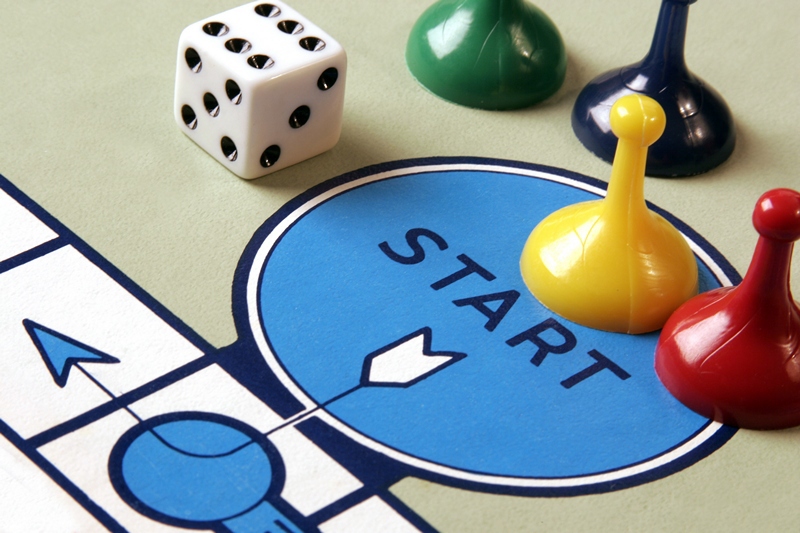On the futility of gamification in training

A few years ago, the phenomenon of “gamification” came into fashion. The essence of it can be briefly described something like this: take a certain set of actions, for example, banking, or sports exercises, or school homework (the more everyday, the better), and apply a set of "game awards" in the form of points (or levels or badges). And then, as if by magic, the world will become more fun, and people will begin to work and learn more effectively.
But if you think about it, do you think this idea is wrong? After all, for example, if you put on good boots, going out on the field you will not immediately score goals like Ronaldo. And if you listen to songs in other languages for a long time and persistently, then you will not learn to speak them in a magical way.
')
From the editors of the blog : the post reflects the opinion of gamification, which differs from the widespread one.
In general, it is rather strange how many competent specialists talk about gamification as a kind of special ingredient that can be added to any task for the sake of efficiency. However, ask experienced developers of educational games, and they will tell you that there is no particular ingredient, especially when it comes to schooling.
Although the idea of gamification has led to the proliferation of a large number of interactive games that include a point-bonus system, but this is not necessary for user involvement and the assimilation of knowledge. But how can electronic games really affect the learning process?

Instead of introducing “gamification of learning” for the sake of increasing students' interest, you need to realize that, ideally, learning as such already contains game elements. True, they are not so obvious, and you need to work hard to find them.
The best teachers have long used in their activities an element of interactivity, creating a learning process built on discoveries, so for pupils and students this is already becoming a kind of game. And we should not “gamify” the learning process. On the contrary, we must show that learning in itself can be a game. As Rough Koster wrote in his book A Theory of Fun for Game Design: “ After all, that's what games are ...“ Entertainment ”is just another word for learning .”
Some time ago, the company GlassLab, specializing in the creation of educational games, began to develop its new product, the game Mars Generation One: Argubot Academy. It was precisely the philosophy of the students' search for the game in the learning process itself. Moreover, one of the most complex subjects was chosen as a subject for learning: the art of argument . Well, just better not come up with in order to prove the compatibility of good game mechanics and the study of any subject. As a result, GlassLab designers have come up with how it would seem possible to combine incompatible things harmoniously: combat adventure game and the process of selecting arguments in a dispute criticizing the arguments of the opponent.
The essence of the game is as follows: players must collect a variety of information, exploring a fantastic city on Mars. After that, it is necessary to place the collected data with the help of the “generator of main moments” in order to get some coherent argument. After that, the players use the created arguments to recharge their “argumentation robots”, which solve important issues for the Martian colony in battle with each other. In the description it sounds rather strange, but the game process is perceived quite differently.

Please note: this is not about some kind of application in which elements of the "gamification" of the art of controversy were simply introduced. And this is not even a "game about the argument." This is exactly the game of disputes .
When players fight each other for making key decisions (for example, “what protein should we eat on Mars?” Or “what do we do with a rogue robot?”), They do not know that they are actually learning the method of argumentation through the statement designed by philosopher Stephen Tulmin . And this game is an excellent example of how the philosophy of “learning as a game” is quite viable as applied to electronic games.
I am glad that this principle still finds its way into the modern industry of educational games. For example, last year in the United States hosted an event called Game Jam, where more than 100 top designers were invited to create educational games. After 48 hours, more than two dozen design teams and developers presented incredible combinations of integrated training techniques and game mechanics. For example, the Disney team offered the Global Doomination game, which required the player to make deliberate decisions to support biodiversity in order to save the fictional “gloobs” creatures from extinction. Another example: a team of students from the University of North Carolina made an amazing game in which the physical principles of acceleration and speed were not only visualized, but also playable. All the games invented at that two-day event were not only educational, but at the same time fascinating and fun. They actively used the principle of engaging users in the process with the help of an unusual and interesting presentation, rather than a banal encouragement with the help of badges and points.
All this inspires hope that the mass dominance of the traditional, serious processes in training and business of elements of gamification in the coming years will decline. At least in training, gamification is a waste of strength, a saddle on a cow. For learning to be fun and really effective, it is necessary to create interesting and fun learning games, and not to distribute virtual badges and points for solving problems and understanding paragraphs.
Source: https://habr.com/ru/post/250285/
All Articles